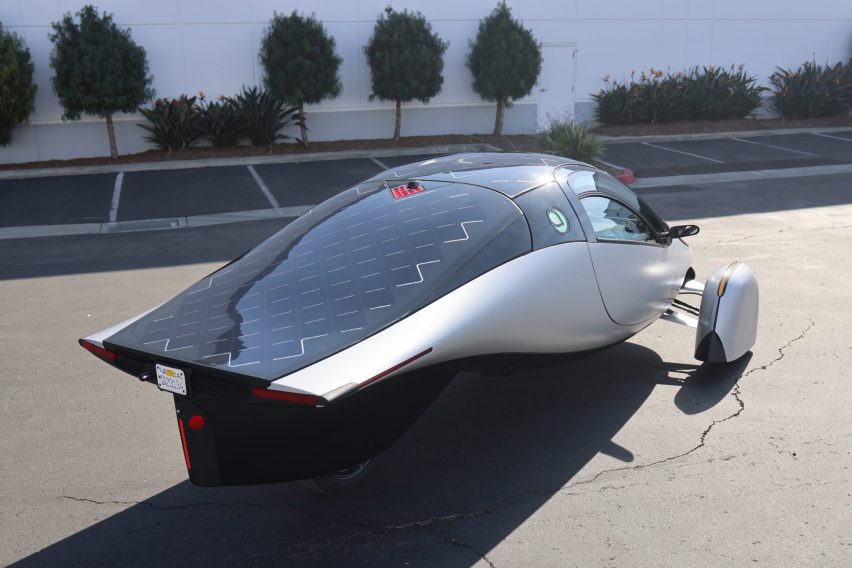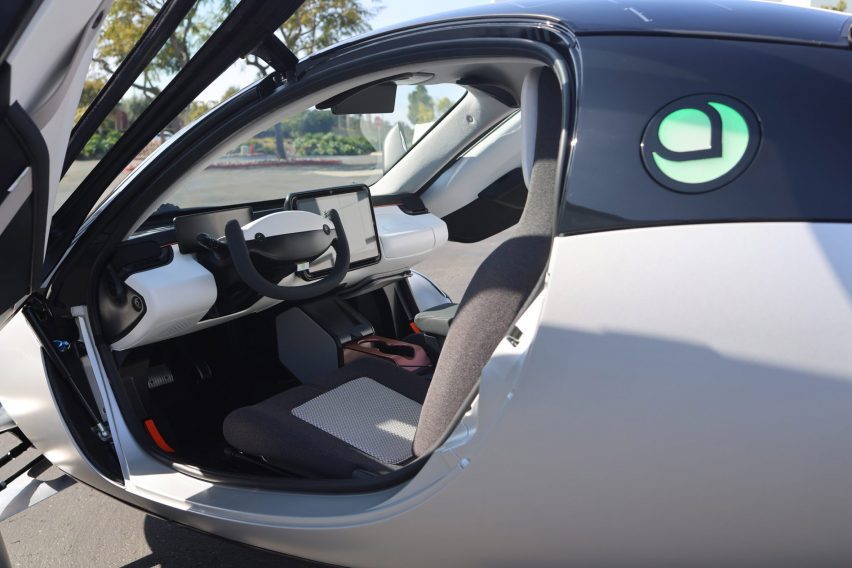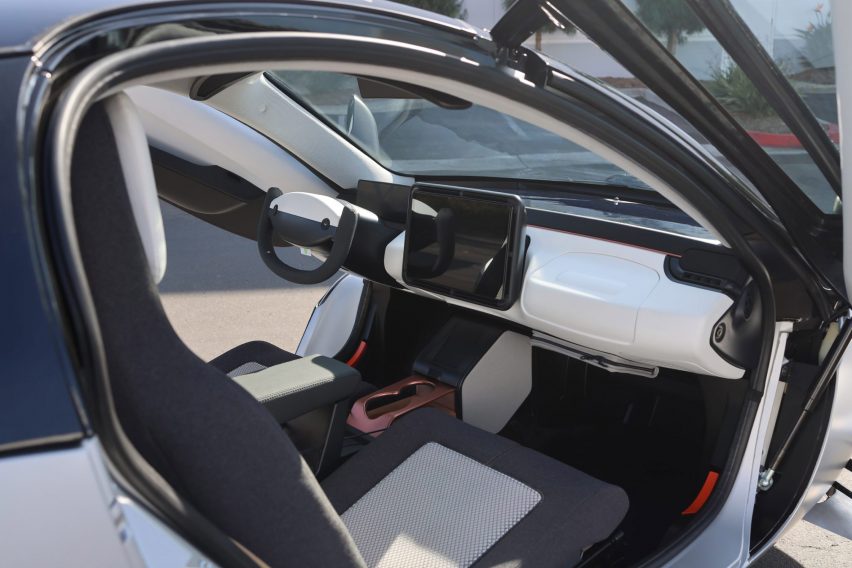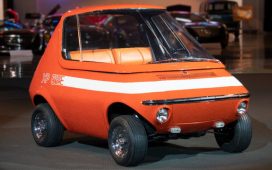Californian start-up Aptera has debuted what it claims to be the first production-ready solar electric vehicle that doesn’t need to be plugged in for day-to-day driving, developed with help from Pininfarina.
Aptera debuted the vehicle – which features solar panels on its hood, dash, roof and hatch – at the Consumer Electronics Show (CES) in Las Vegas this week.
The company claims the car could significantly reduce reliance on the grid for charging because, under the right conditions, it can drive up to 40 miles (64 kilometres) per day powered entirely by sunlight, with no need to be plugged in between uses.

This should be enough to cover the daily needs of the average American, who drives about 37 miles (60km) per day.
For longer drives or cloudy days, the Aptera vehicle includes a battery that the company says gives up to 400 miles (643km) of range from under an hour of charging.
The car’s range is enabled by its unusual design, intended to be ultra-aerodynamic. The three-wheeled, two-seater vehicle has a teardrop-shaped body, which was finessed in partnership with Italian automotive design studio Pininfarina.

Aptera used the company’s wind tunnel in Turin, Italy, to validate the design, working closely with the Pininfarina team to hone the shape so it would create the lowest possible drag coefficient – a figure used to quantify the resistance an object experiences when moving through air.
Aptera says its vehicle has the lowest drag coefficient of any production passenger vehicle – “closer to an airplane’s aerodynamics than to typical cars“.
The carmaker has not shared what exactly that figure is, although a specification document from 2023 shows the company was aiming for 0.13, whereas most modern vehicles come in at around 0.25 to 0.3.

Another key to the car’s range is its lightweight body, primarily made from a type of carbon fibre called carbon fibre sheet moulding compound (CF-SMC).
The material is mouldable into complex shapes, allowing the company to construct the light yet robust car from only six key body components.
The CF-SMC is made by the CPC Group in Modena, Italy, which also serves luxury and sports car companies such as Ferrari, Lamborghini and McLaren.
Aptera Motors said the debut of the “production-ready” vehicle marked a pivotal moment for the future of sustainable transportation.
“This vehicle embodies years of innovation and relentless pursuit of energy-efficient mobility,” said co-CEO Chris Anthony. “CES is the perfect stage to share our vision and invite the world to join us in creating a cleaner, solar-powered future.”
This is the second go-round at making a solar electric vehicle for Aptera, which was founded in 2006 before running out of money and liquidating in 2011.

The original founders – Anthony and Steven Fambro – relaunched the company in 2019.
As of October 2024, Aptera reported it had 50,000 pre-order reservation holders.
The world’s largest consumer electronics fair, CES is on from January 7 to 10. Alongside car companies revealing concepts, prototypes and production models, this year’s event showcased a hormone thermometer, a three-in-one projector and a tiny cat robot that blows on soup to cool it.
CES 2025 takes place at various locations in Las Vegas from 7 to 10 January 2025. See Dezeen Events Guide for an up-to-date list of architecture and design events taking place around the world.











